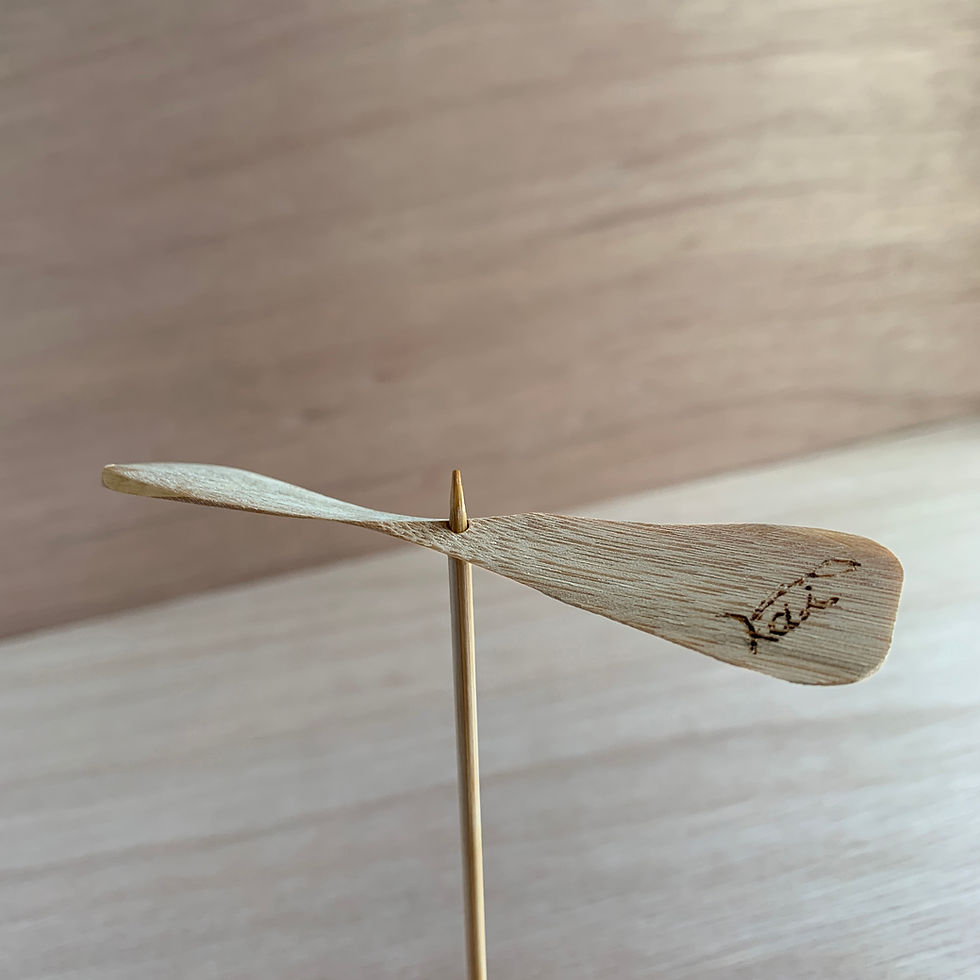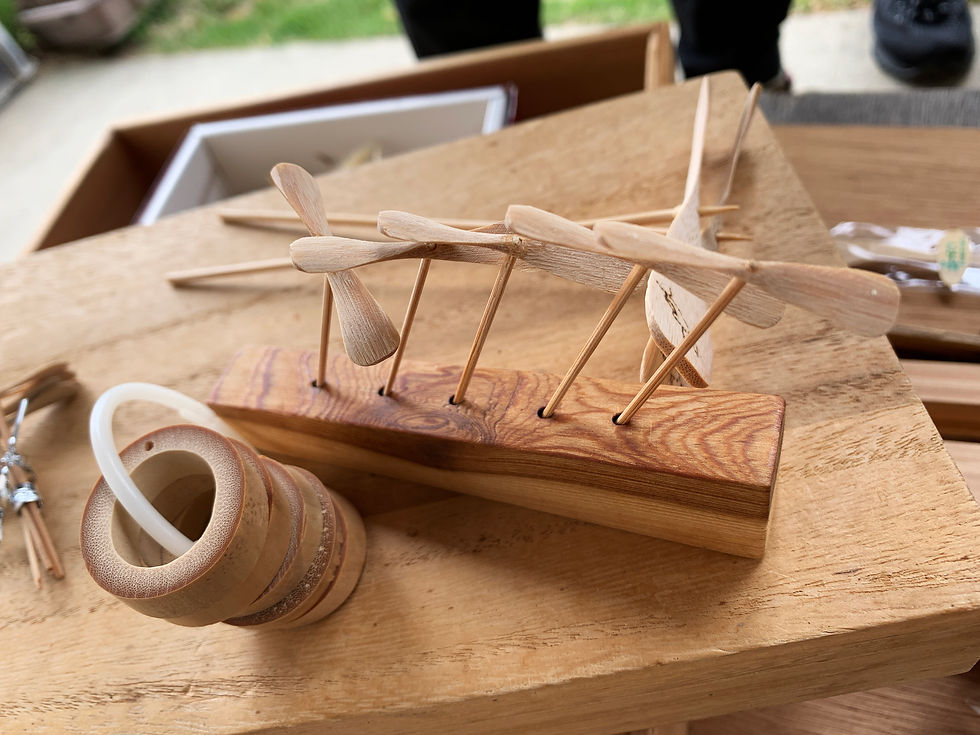Special thanks to Noriko Masuda in co-authoring stories on Aso forestry.

Photo by Noriko Masuda
ON MATERIAL: "THINNED WOOD" 間伐材
THINNING is an important practice in the forestry industry to maintain the well-being of forests. (read more about Aso forestry)
There are two types of thinning:
First, trees with no market value or weak genetic properties are cut.
In other case, young healthy trees are also selected to be cut; to promote growth of other good healthy trees , and to maintain balance and diversity of species. If thinned trees are left in the mountains, they all go to waste, or could potentially become dangerous driftwoods in flood seasons. As experts in wood, Carpenter Kai and Forest Master Yamabe would select only high-quality thinned timber for re-purposing.
Kai has since been breathing new lives to thinned woods.
More about Forester Mr. Yamabe and Aso's forestry here.

APPRECIATE YOUR CHOPSTICKS
As a builder, Kai are often left with surplus wood from construction. He started handcrafting chopsticks with these perfectly useable and high-quality wood and offering workshops teaching people how to hand-carve chopsticks. Why chopsticks? Kai thinks one will learn how to appreciate objects and takes better care of them when it is hand-made by one’s own effort. It’s like building an emotional connection, especially when chopsticks is something so close to Japanese' daily life.
TAKETOMBO the "bamboo dragonfly"
Kai's woodshop is surrounded by rice paddies in an agricultural community. Kai utilizes local material in his craftwork. Most are quality lumber from forest-thinning, as well as bamboo he harvested from his elderly neighbors' bamboo grove which he helps maintaining. The neighbors are happy to see the craft objects being made out of their bamboo.
Bamboo is a fast-growing, renewable resource that the locals are battling with, "bamboo grows so fast and we cannot keep up with them! I hope we can find more ways to utilize them"
Through Kai's hands, they become a variety of nostalgic craft toys. Kai stated that his taketombo can propel as high as 3-stories. They are all carved by hand.
Kai makes taketombo propellers using bamboo from his neighbor's grove, and it has to be carved thinly and evenly to achieve perfect balance, if not it will not be able to spin well.
WHAT IS TA-KE-TOM-BO ?
竹とんぼ 竹蜻蛉
Whenever I met a Japanese person and handed out TKTB's business card, I often spotted a warm smile from the recipients when they see the logo of a taketombo. Taketombo is an old hand-crafted bamboo toy loaded with nostalgic sentiment with most people in Japan.
Taketombo (translates to "bamboo dragonfly") is a propeller hand-made toy, made with wood or bamboo, dated as far back to Nara or Heian period (8th century). Nowadays, Japanese children still learn to make taketombo in primary school and the fanatics hold tournaments competing to achieve the highest flight.
Get your own taketombo
Hand-Made by Kai












